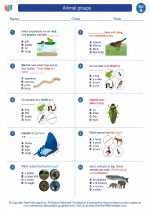Synthetic Rubber
Synthetic rubber is a man-made material that is designed to mimic the properties of natural rubber. It is produced through the chemical process of polymerization, where monomers are bonded together to form long chains of polymers. This process allows for the creation of a wide range of synthetic rubber materials with varying properties such as elasticity, strength, and resistance to heat and chemicals.
Properties of Synthetic Rubber
Synthetic rubber has several key properties that make it a versatile material for various applications:
- Elasticity: Synthetic rubber can stretch and return to its original shape, making it ideal for use in products such as tires and rubber bands.
- Resistance: It can resist damage from exposure to heat, chemicals, and weather, making it suitable for use in industrial and outdoor applications.
- Durability: Synthetic rubber is long-lasting and can withstand wear and tear, making it a popular choice for products that require resilience.
- Versatility: It can be formulated to have specific properties to suit different applications, such as in seals, gaskets, and insulation.
Types of Synthetic Rubber
There are several types of synthetic rubber, each with its own unique composition and properties:
- Styrene Butadiene Rubber (SBR): Known for its abrasion resistance, SBR is commonly used in the production of tires, conveyor belts, and shoe soles.
- Polybutadiene Rubber (BR): BR offers high resilience and low temperature flexibility, making it suitable for applications such as golf balls, adhesives, and coatings.
- Polyacrylic Rubber (ACM): ACM exhibits excellent resistance to heat, ozone, and oil, and is often used in automotive seals and hoses.
- Neoprene Rubber (CR): Neoprene is resistant to oil, chemicals, and weathering, making it ideal for wetsuits, hoses, and gaskets.
- Nitrile Rubber (NBR): NBR is oil-resistant and commonly used in the production of seals, gaskets, and fuel hoses.
Applications of Synthetic Rubber
Synthetic rubber is utilized in a wide range of industrial and consumer products, including:
- Tires for vehicles
- Footwear such as shoes and boots
- Seals and gaskets for machinery and equipment
- Insulation for electrical wiring and cables
- Adhesives and coatings
- Sports equipment like balls and mats
Study Guide
To further understand synthetic rubber, here are some key topics to explore:
- Chemical process of polymerization in the production of synthetic rubber
- Differences between natural rubber and synthetic rubber
- Advantages and disadvantages of using synthetic rubber in various applications
- The impact of synthetic rubber production on the environment
- Current research and developments in the field of synthetic rubber technology
◂Science Worksheets and Study Guides First Grade. Animal groups

 Worksheet/Answer key
Worksheet/Answer key
 Worksheet/Answer key
Worksheet/Answer key
 Worksheet/Answer key
Worksheet/Answer key
 Vocabulary/Answer key
Vocabulary/Answer key
